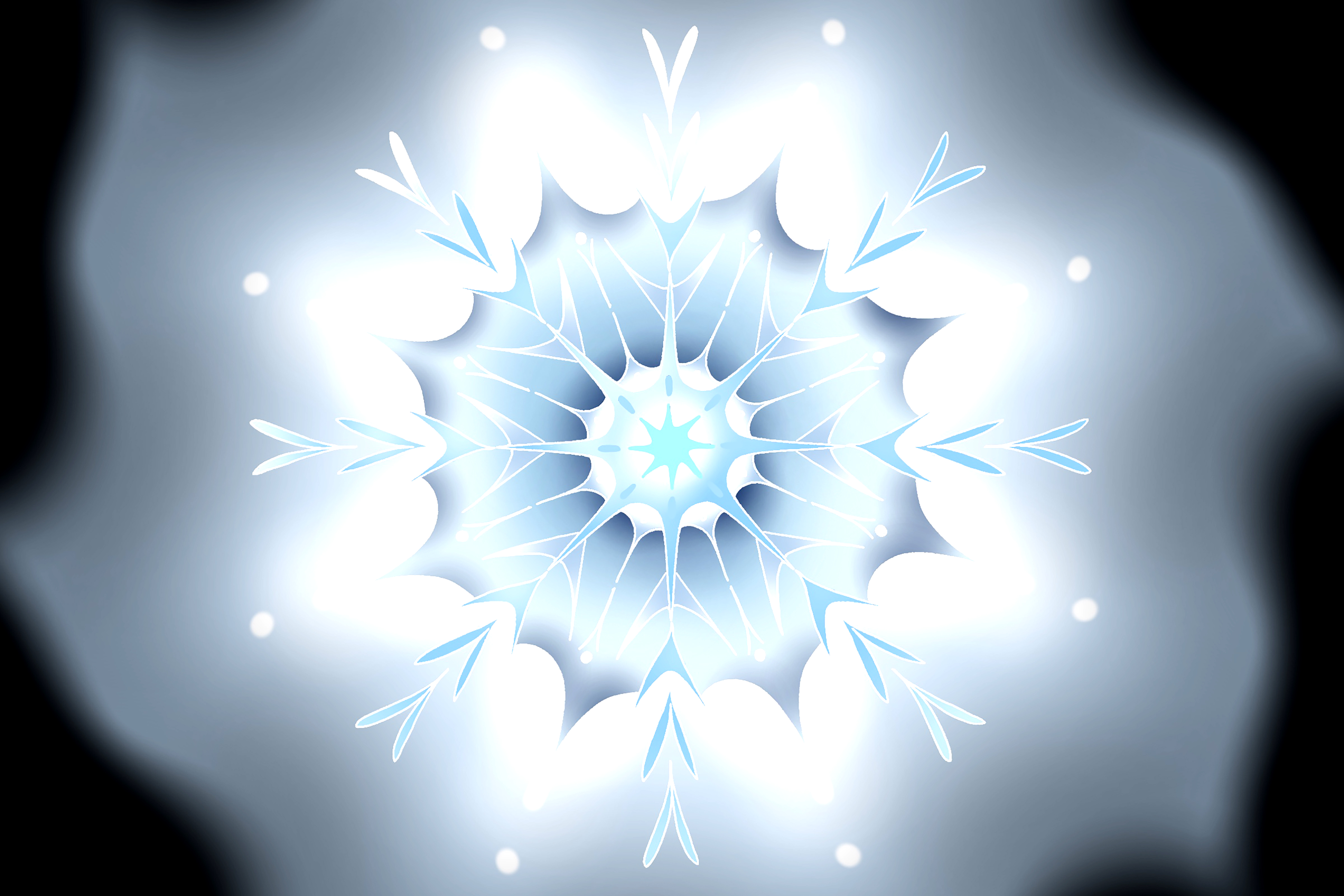When it’s dark outside in Anchorage, Alaska, therapist Karen Cunningham pulls on long johns, one of her 16 pairs of snow pants, a hat, gloves, her warmest coat, and snow boots, and lies down in a pile of fresh snow. “It’s pitch black, and these white things are just floating down so gently,” she says. “It’s hope for me. From the darkness comes all these infinite possibilities and creations.”
Snow lovers like Cunningham are prone to wax poetic about how they fall for sparkling flakes again and again—even this year, as a record-setting 100-plus inches have already hit Anchorage. A humming anticipation takes hold of the city on the eve of potential storms, and “everybody prays for a snow day,” she says. “Everybody’s like, ‘Let’s shut the city down for a little bit, and go outside and play in it.’”
What exactly makes snow so special? Psychologists and scientists have theories about why it’s the most celebrated type of precipitation. Its unpredictable nature contributes to the aura of anticipation around it—and so does the good, old-fashioned fun you can have in it.
It reminds us of childhood
Trevor Harley’s earliest memories revolve around the weather. When he was 4, at Christmastime, he woke up at his grandmother’s house to find a world transformed. “I don’t think I’d ever seen snow before, and it was a really thick, heavy snowfall,” says Harley, emeritus professor of psychology at the University of Dundee in Scotland and author of the book The Psychology of Weather. “It was absolutely amazing.”
Freshly fallen snow, he believes, is one of the most beautiful things humans see in their lifetimes. Part of the appeal is its ability to turn grimy streets into something magical. “I can’t think of any other event or thing in life that has the transformative nature of snow,” Harley says. Because it happens infrequently—at least in most parts of the world—it’s a novelty, often prompting nostalgic memories: of snow days, childhood fun, and holidays spent yearning for a white Christmas. “It makes us happy,” he says. “Thinking about snow when we were young, and all the good times we had, cheers us up.”
It’s a feast for your senses
Snow engages all five senses, points out Cunningham, the therapist in Alaska. Not only is it easy on the eyes, but it’s fantastic at reflecting sunlight. That helps brighten the dark days in Cunningham’s city, where there are only six hours of sunlight during some parts of the year. Beyond that, “You can feel it, you can taste it, there’s a certain smell to it,” she says. “And the sound of silence—the sound of snow just floating down—is so healing.” Research suggests a couple inches of snow can absorb up to 60% of sound, which means the world really does seem quieter (and more peaceful) when it’s coated in white.
Read More: Why Skiing Is a Ridiculously Good Workout
It’s fleeting
Kari Leibowitz, a health psychologist and author of the forthcoming book How To Winter: Harnessing Your Mindset To Embrace All Seasons of Life, calls herself a reformed “winter hater.” She spent a year living in northern Norway—a part of the Arctic where the sun doesn’t rise from the middle of November until the end of January—to study how people manage to thrive during such dark, cold months. Now based in Amsterdam, she’s learned to enjoy snow and especially appreciates its ephemeral nature. “It’s like a rainbow,” she says. “It’s not going to be around forever.” That forces people to seize the present moment in a way they otherwise might not.
It breaks us out of our routines
Snow unlocks an array of winter activities that give people license to play, notes Leibowitz. “You can ski, you can snowshoe, you can snowmobile, all of that,” she says—and is there any greater glee than sledding down a generous hill? Snow prompts an almost childlike sense of free-spirited fun.
It’s unpredictable
As anyone who’s ever been disappointed by an under-performing forecast knows, predicting exactly how much snow will fall is tricky: Even a slight change in factors like atmospheric temperature or wind speeds can knock a winter weather event sideways. If a storm track shifts 20 or 30 miles, a would-have-been foot of snow can turn into a dusting, says AccuWeather chief meteorologist Jonathan Porter. “I think part of the excitement around it is that snow can be very localized, with sharp variations even within a city,” he says. “That makes people interested.”
It’s disappearing
These days, in many parts of the world, there’s less snow in the forecast. Research published in the journal Climate in 2023 found that global annual snow cover has dropped by about 5% since 2000. That’s bad news for ice fishermen, agriculture workers, winter recreationists, and the planet as a whole. Snow plays an important role in regulating the temperature of Earth’s surface and filling rivers and reservoirs that provide drinking water; plus, winter tourism drives local economies around the world.
“Unfortunately, it’s the season that will vanish first,” says Kathleen Gasperini, founder of the non-profit Snow Lovers, which aims to save winter for future generations by building awareness, urging businesses to adopt scientific and snow-friendly practices, and advocating for the use of clean energy sources.
Gasperini encourages snow enthusiasts who are worried about declining snowfall to take action by contacting their local ski resorts and pushing for environmental measures, from implementing recycling programs to installing solar panels. Resorts could also offer reduced tickets for young ski clubs—ensuring that a new generation of snow lovers will understand exactly why snow matters.
“It’s a fragile season, and that’s one of the heartbreaks of climate change,” she says. “People really, really love snow, and it would be so sad if our kids and grandkids never get to see it.”

